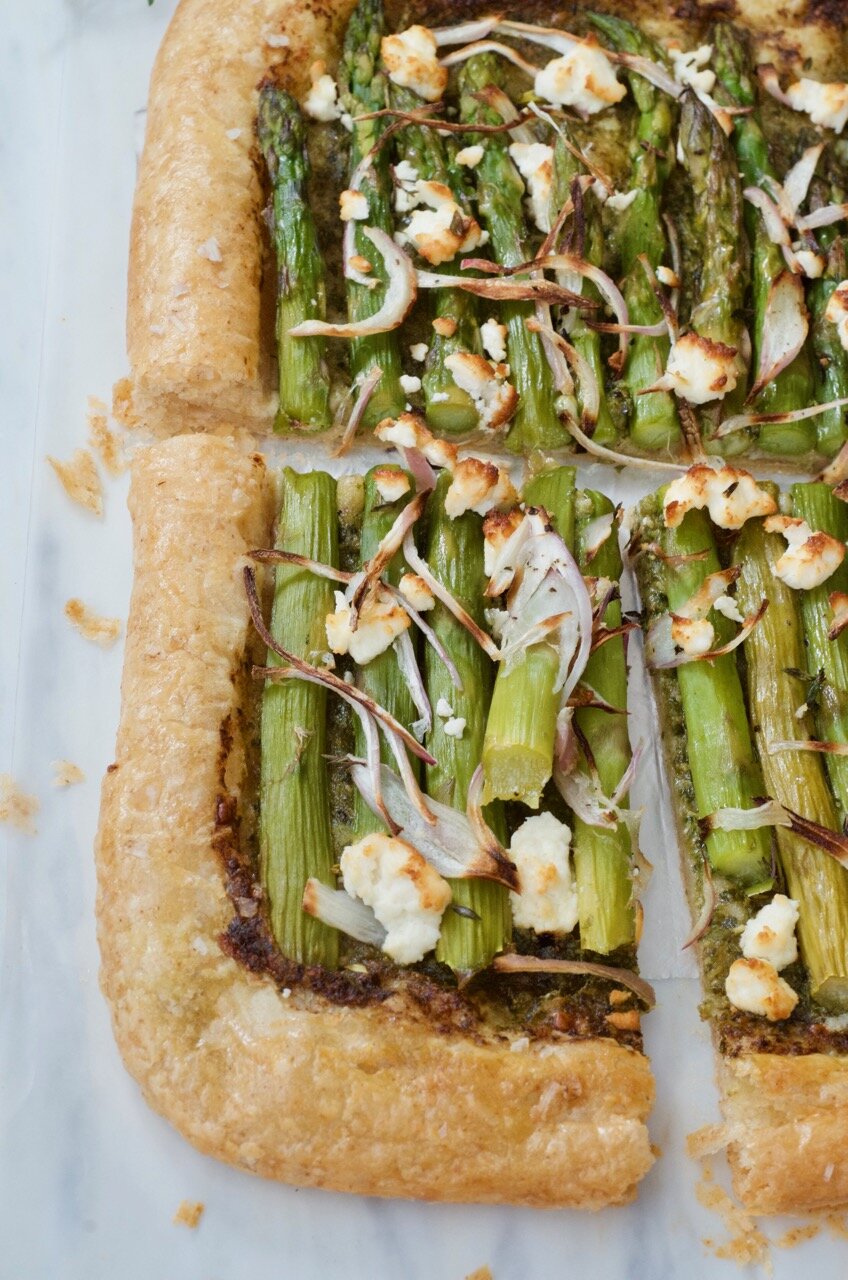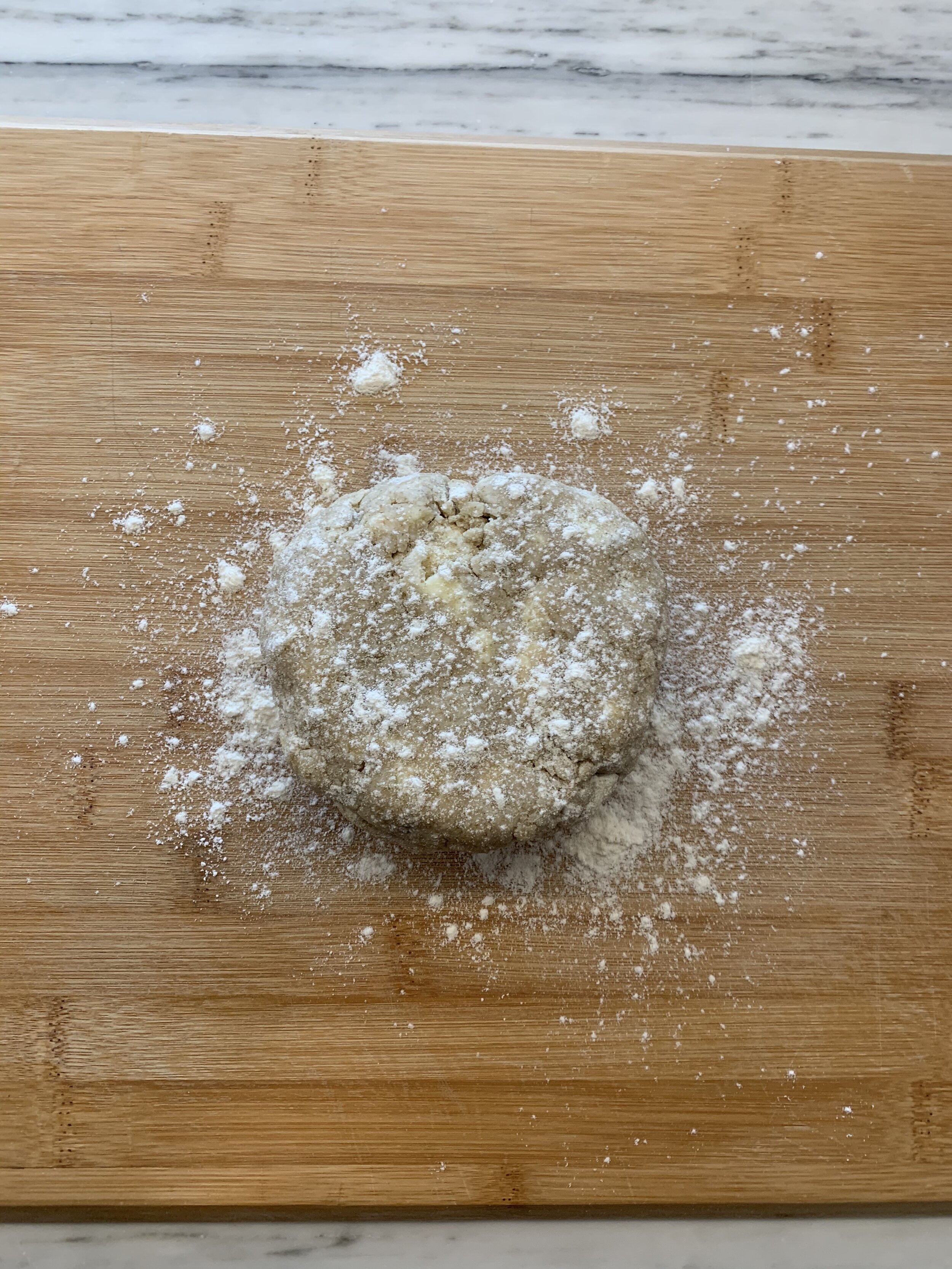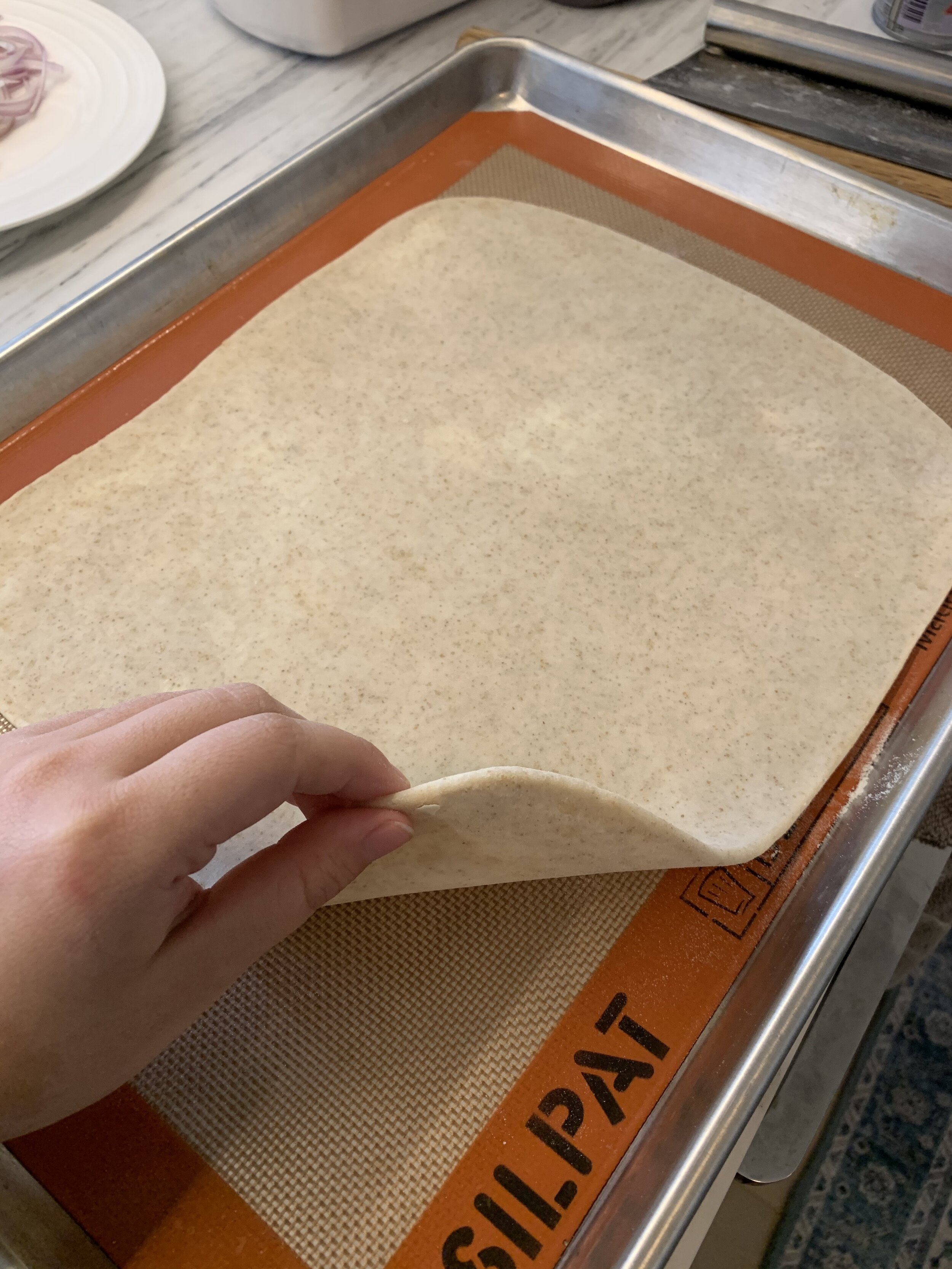spring asparagus and pesto rye tart
/As the weather warms and the trees blossom, my favorite sign of spring is when asparagus season hits. The green stalks are bright and tender, and it’s a telltale sign of a cornucopia of seasonal produce to come.
Sitting on top of a flaky rye crust, the pesto brings together the asparagus, shallots, and crumbly feta cheese. The rye offers a deeper and more complex alternative to all purpose flour, which complements all the bright flavors coming from the topping.
The rye tart crust
To create a shattering tender crust, make some extra envelope folds in your dough before rolling it out. Keep the initial butter chunks large, as they will get incorporated into the crust more as you fold the layers. The initial dough will be craggly with bumps and ridges, but as you make the folds, the dough will smooth out.
A few tips:
Trim the tough bottoms off the asparagus - you can even break them off with your hands
Keep the dough cool at all times, and leave some space in your fridge to easily pop in the dough if it starts to warm up
Feel free to customize to your taste. You can leave out the shallots if you don’t like them or switch out the feta for another cheese like parmesan or goat cheese.
spring asparagus and pesto rye tart
serves 6
ingredients
for the rye crust:
1 cup AP flour
1/4 cup rye flour
1/2 teaspoon salt
1 stick butter, cut into 1 inch pieces
4 - 6 tablespoons ice water
for the topping:
1 bunch asparagus
4 tablespoons pesto
1/2 shallot, thinly sliced
1 teaspoon olive oil
1/2 cup feta cheese, crumbled
1 egg, whisked (optional)
flaky salt (optional)
steps
Rye crust:
1. Mixing dry ingredients with butter: Combine the AP flour, rye flour and salt. Toss in the butter cubes (make sure the butter is as cold as possible) until the individual cubes are covered in flour.
2. Flatten the butter: Working quickly (so the butter doesn’t warm up too much), start flattening the butter pieces between your fingers but leave them in large chunks.
3. Hydrate: Drizzle in the ice water, and toss with the flour/butter mixture (like you would toss a salad - do not knead). The optimal hydration for your dough is to have it hold together in a ball with no floury streaks. If your dough is still too crumbly, add water slowly as a little water can go a long way. Form dough into a disk, wrap tightly and rest in the fridge for at least 30-60 min.
4. Extra folds: This step is optional, but this is the key to getting a really flaky crust. Roll out the dough into a long rectangle and fold into thirds. Rotate 90 degree, and repeat the process of rolling and folding 2 more times. The dough should start to smooth out by the third fold. Let it rest in the fridge for another 30 min.
5. Roll out dough: Trying to keep the dough in a rectangular shape, roll out the dough until 1/4 inch thick. The shape should be long enough to hold the asparagus stalks. You can trim the edges of your dough to get a perfect straight edge if you’d like, but I kept mine as is to avoid wasting any dough. Let the rolled out dough rest in the fridge as you prepare the rest of the toppings.
Preheat oven to 375 F
Topping:
6. Blanch the asparagus: Bring a pot of water to boil over high heat and quickly drop the asparagus in, cooking for ~2 min. Transfer the asparagus over to an ice bath to stop the cooking and pat dry.
7. Build the tart: Thinly spread a layer of the pesto over the tart. Arrange the asparagus in a single layer. Toss the shallot slices in a teaspoon of olive oil, and add on top of the asparagus along with the feta. Optional: brush the edges with egg, and top with flaky salt.
8. Bake: Bake in a preheated oven for 25 - 30 min, or until the edges turn golden brown. If the shallots start browning too quickly, turn the heat down to 350 F midway.














